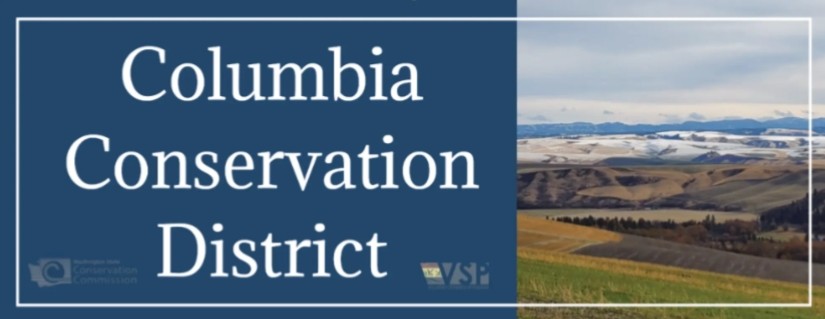2025 Native Plants Sale Preview

Purple Coneflower
Echinacea Purpurea
Supple, green arrow leaves, purple flowers with cone shaped center atop stalks.
Light: Full to part sun
Soil: Well-drained moist to dry
Height: up to 3 feet
Spacing: 2 to 3 feet
Good to know: Does not like to be moved after established. Attracts butterflies and many birds!
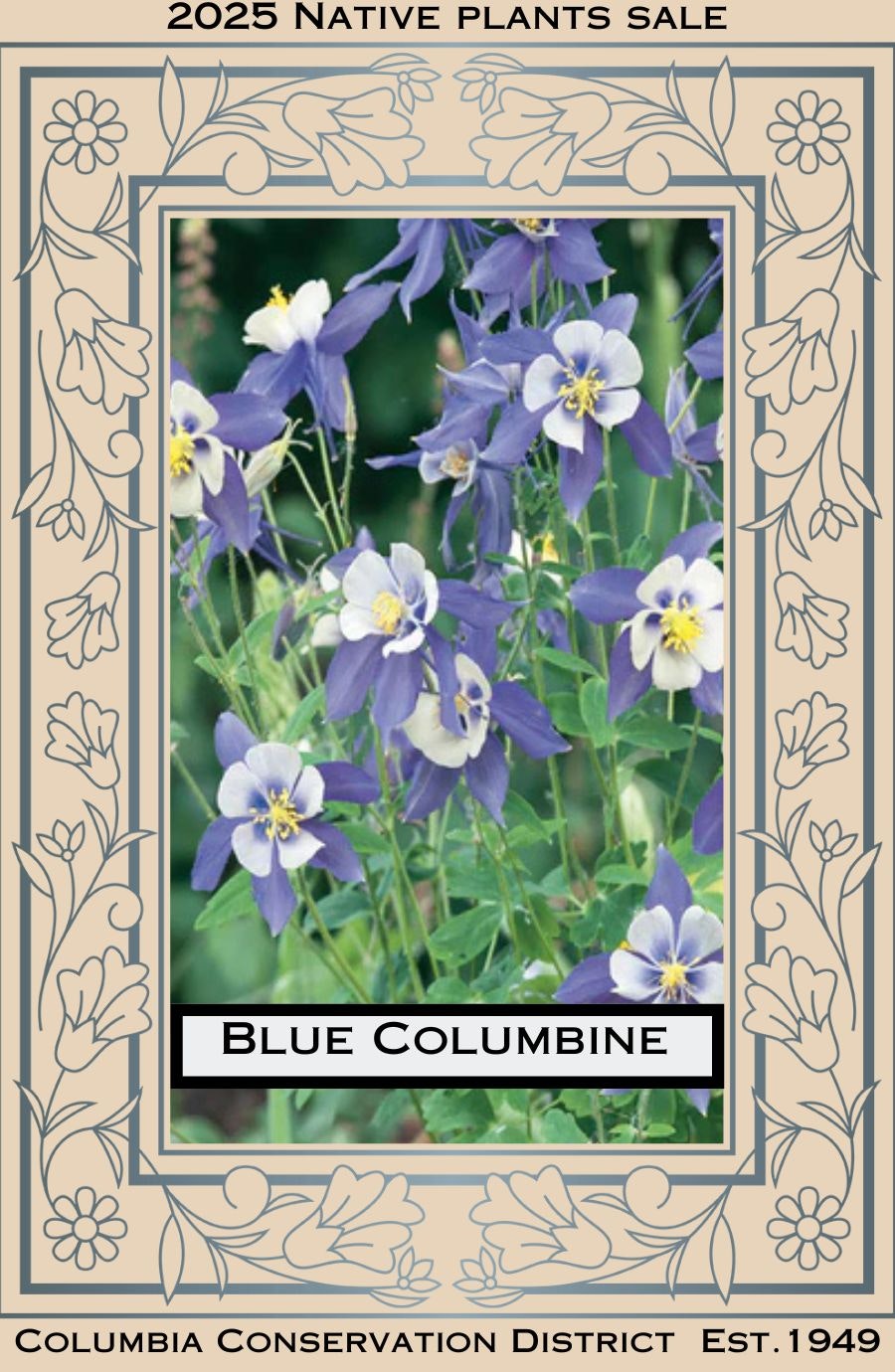
Blue Columbine
Aquilegia Coerulea
Bushy with bright green leaves and showy blue or blue and white flowers in spring and early summer. Self-seeds easily. Good for borders, edging or in perennial beds.
Light: Full to part sun
Soil: Evenly moist through season. Well-drained
Height: 1 to 3 feet
Spacing: 12” to 18”
Good to know: Hummingbirds love them!
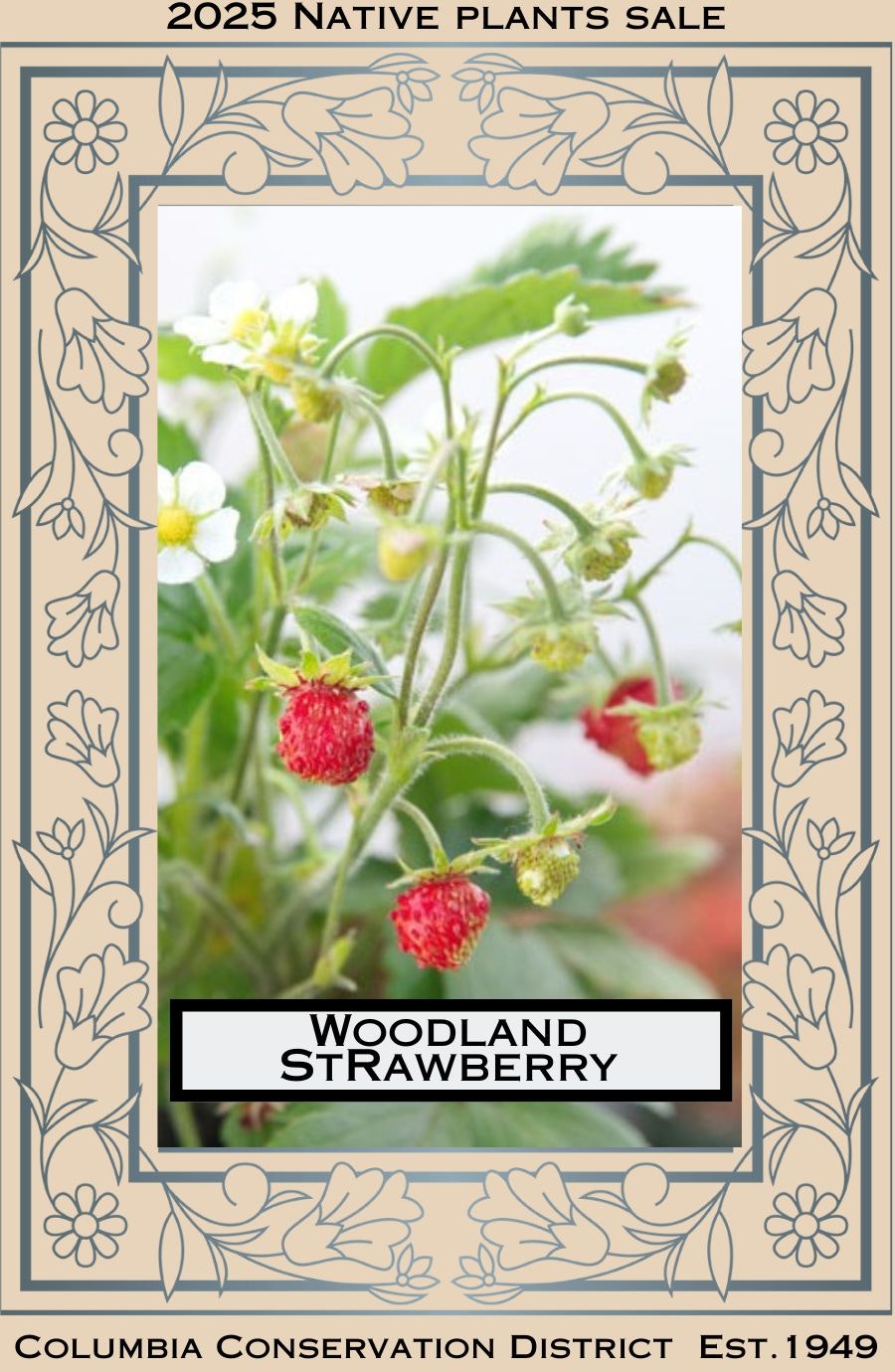
Woodland Strawberry
Fragaria Vesca
Attractive, spreading ground cover, white flowers and small strawberry fruit.
Light: Full to part sun
Soil: Well-drained, moist.
Height: 3” to 6”
Spacing: 12”
Good to know: Edible for humans and wildlife. Keep runners at bay with pruning – it can be invasive. Divide every 3-4 years to keep vigor. Deer resistant after established

Sword Fern
Polystichum Munitum
Robust green leaves in dense crowns up to 60 inches long!
Light: Part sun to full shade
Soil: Moist
Height: 3 feet
Spacing: At least 3 feet
Good to know: Evergreen and deer-resistant. Perfect in woodlands or shady rock gardens.

Davidson’s Penstemon
Penstemon Davidsonii
Blue-lavender-purple blooms over dark green foliage. Great in dry, rocky spots.
Light: Full to part sun
Soil: Well-drained
Height: 8” to 10”
Spacing: 12” to 16”
Good to know: Evergreen. Attracts bees, butterflies, hummingbirds.
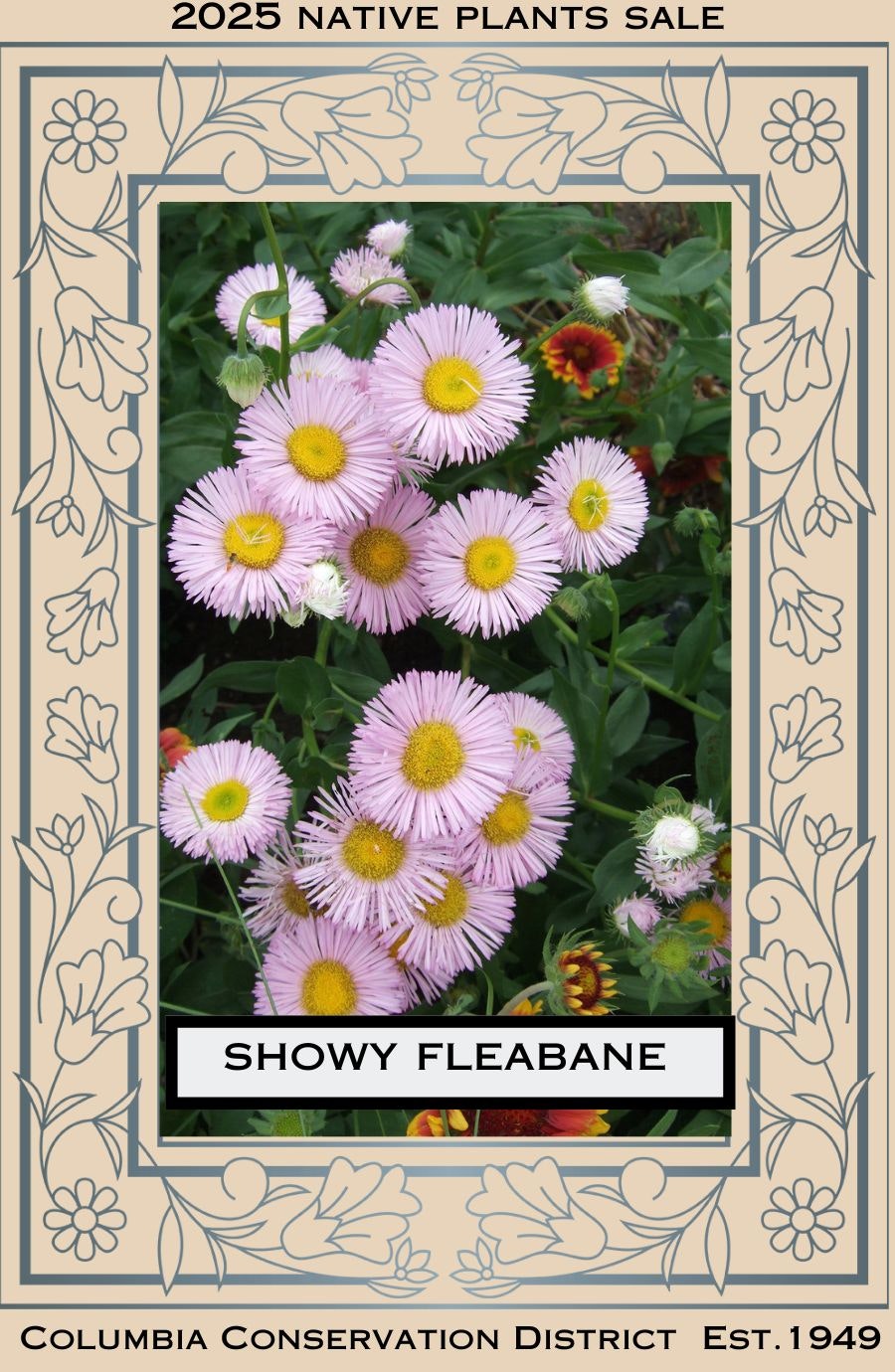
Showy Fleabane
Erigeron Speciosus
Petite ray-like flowers with golden centers with many to a stem from June to September.
Light: Full sun
Soil: Well-drained
Height: Up to 3 feet
Spacing: 2 feet
Good to know: Attracts pollinators! Virtually disease-free, great for beds and borders.
Mildly toxic to cats, dogs and livestock if eaten.
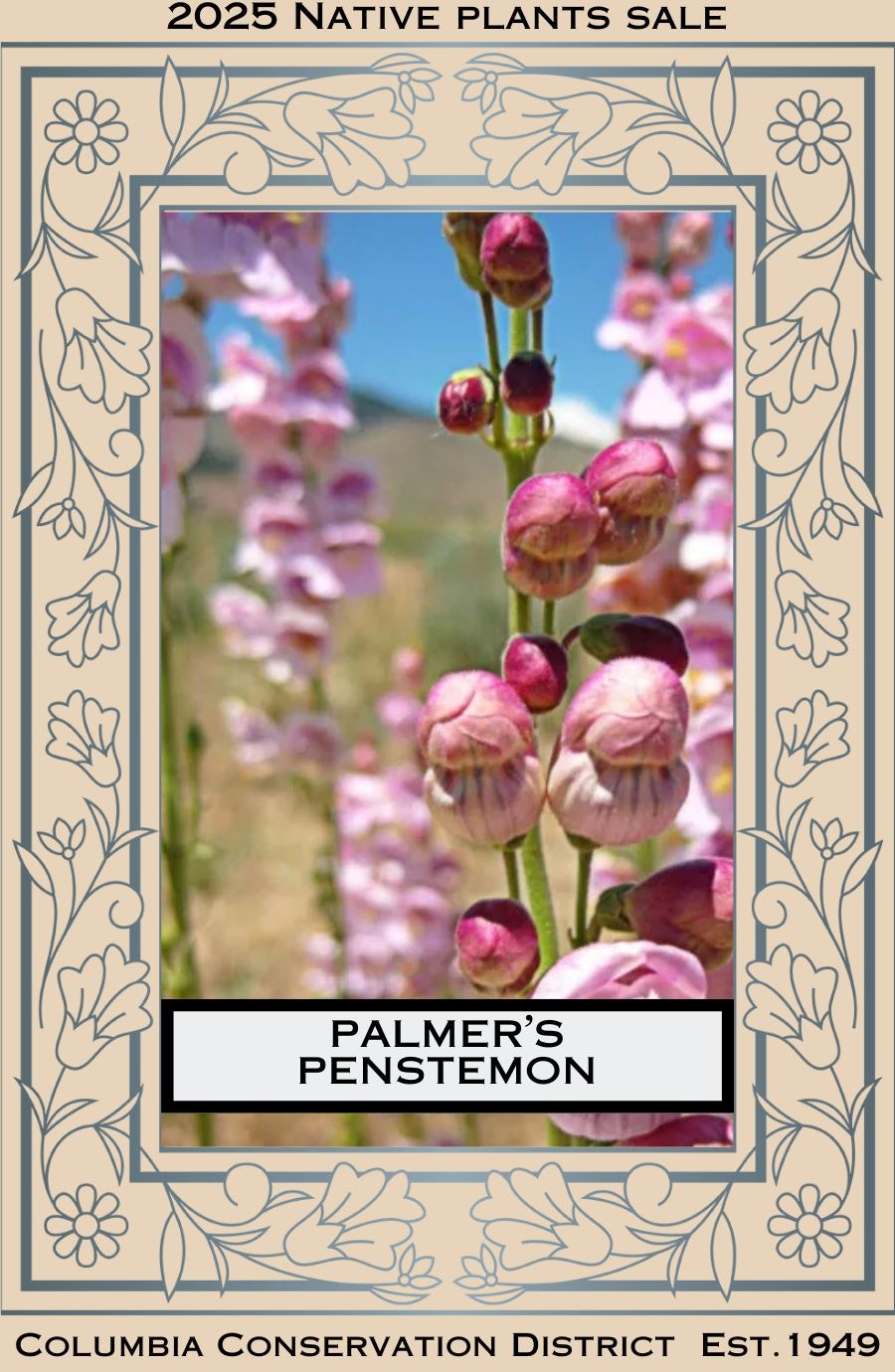
Palmer’s Penstemon
Penstemon palmeri
Light pink blooms in clusters from stems on a main stalk bloom mid to late spring.
Light: Full to part sun
Soil: Well-drained
Height: 1 to 3 feet
Spacing: 1 to 3 feet
Good to know: Attracts bees, butterflies, hummingbirds.
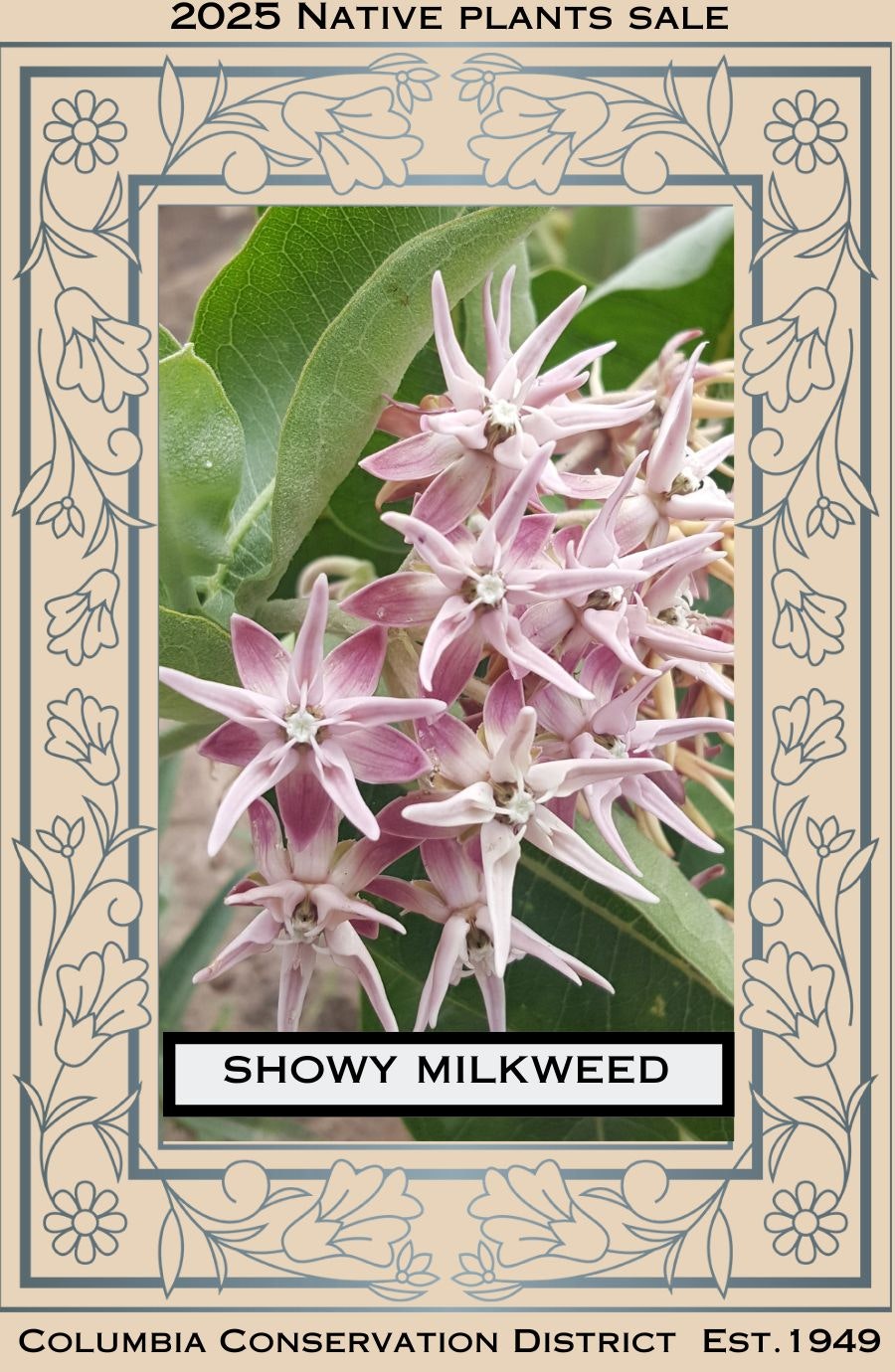
CURRENTLY UNAVAILABLE
Showy Milkweed
Asclepias Speciosa
Rose colored star flowers sit atop velvety blue-green foliage.
Light: Full sun
Soil: Well drained. Prefers moist
Height: 1-1/2 to 3 feet
Spacing: 16” to 24”
Good to know: Deer resistant, honey bees, butterflies and hummingbirds LOVE this plant.
Most commonly found along roadsides and ditches across the west.
It is the least poisonous of the milkweed family, but can still be harmful to livestock.
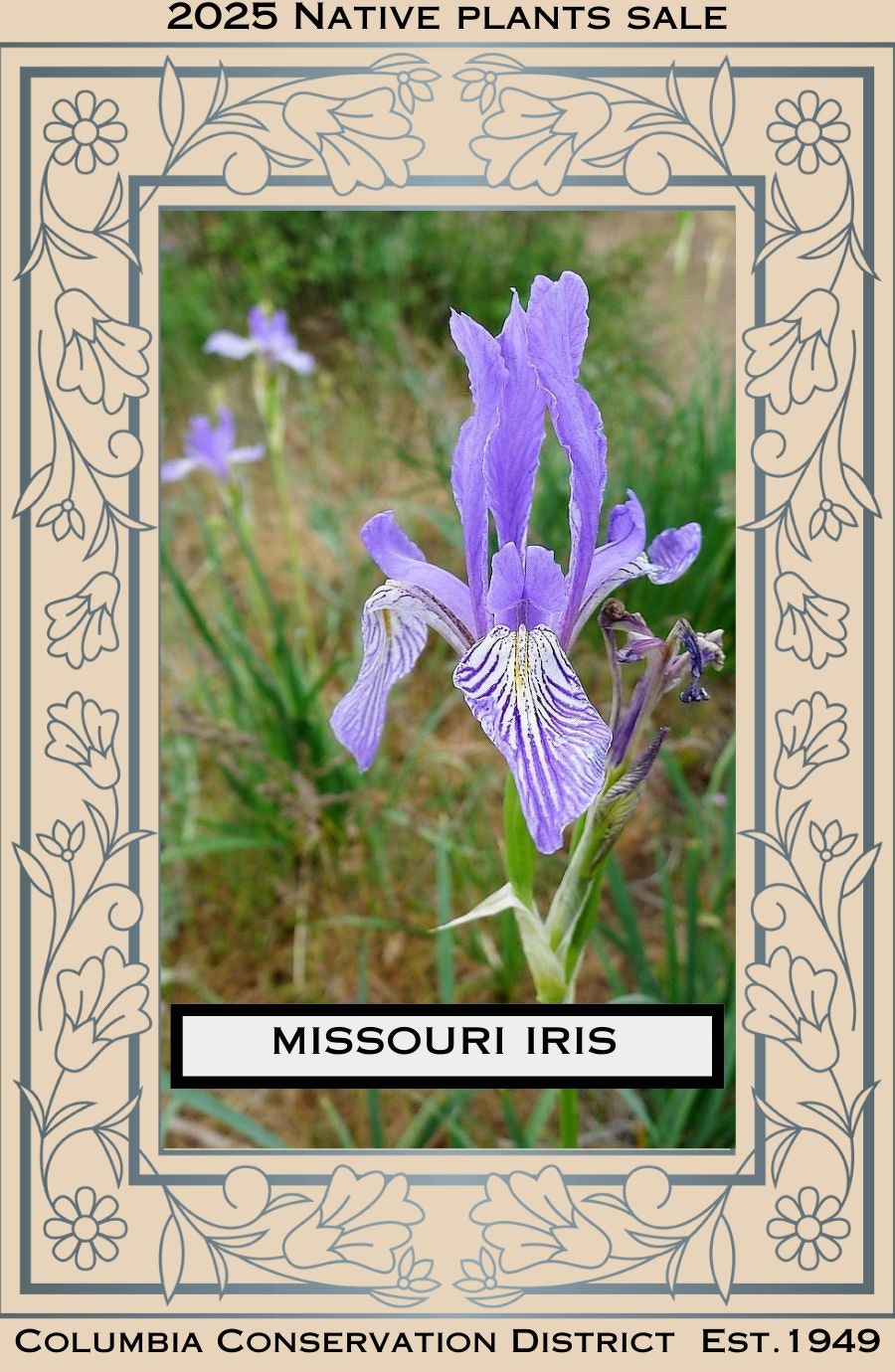
Missouri Iris
Iris missouriensis
Violet blue flowers bloom atop stout leafless stalks that rise up among dense, flexible, sword-shaped leaves.
Light: Full sun to part shade
Soil: Well-drained, moist
Height: 1 to 2 feet
Spacing: 1 to 2 feet
Good to know: Lewis and Clark first collected this plant along the Missouri River in 1806. Native to western North America. Best grouped in sunny areas of perennial beds, borders or foundations.
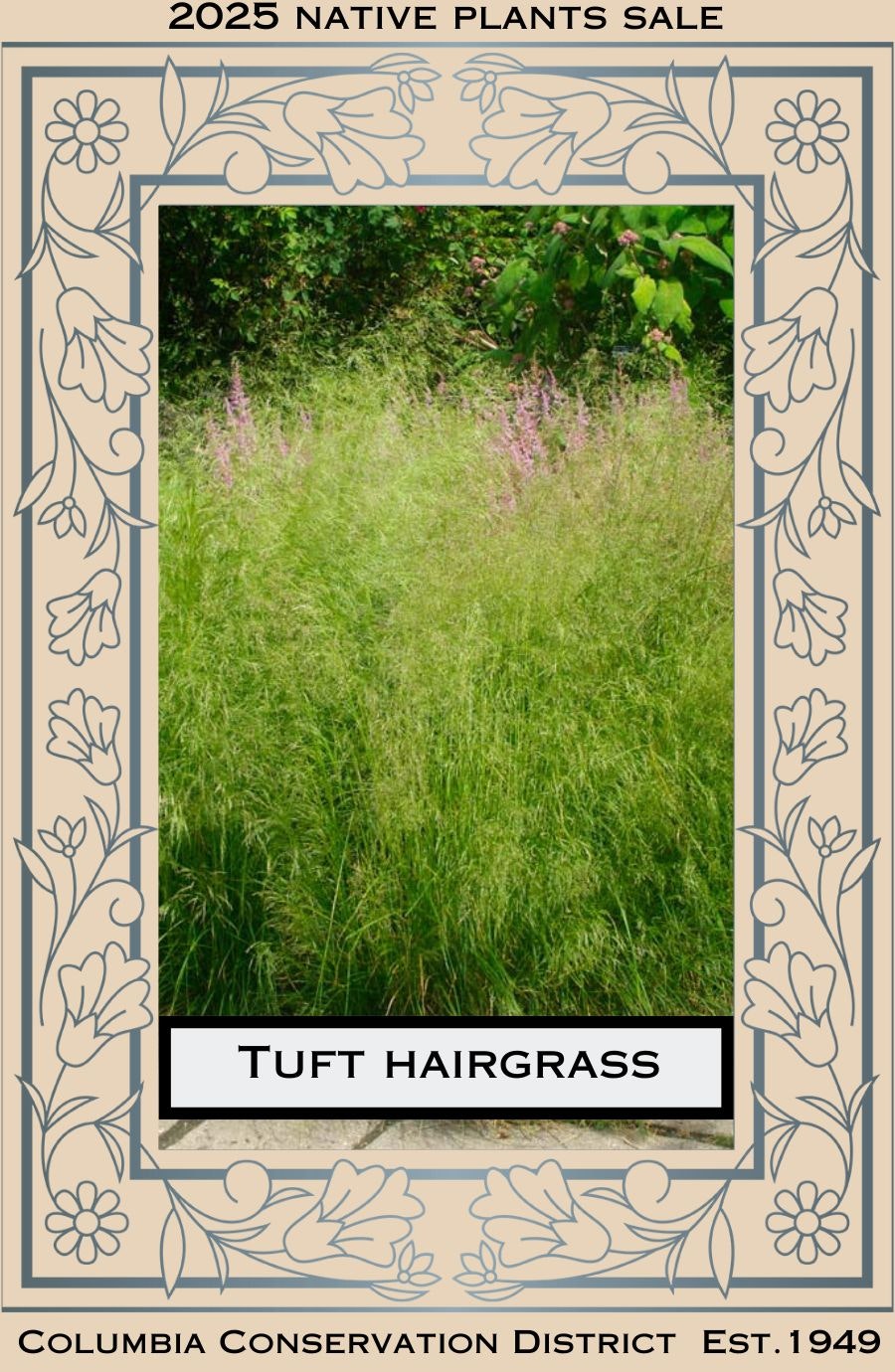
Tuft Hairgrass
Deschanosia Caespitosa
Grows in dense clusters. Finely branched, pale green flowering stalks.
Light: Full sun to part shade.
Soil: Well-drained, moist.
Height: 2 to 3 feet
Spacing: 1 to 3 feet
Good to know: Easy care! Edible seeds which can be used like other cereal grains or left to feed wild birds in late summer and fall.
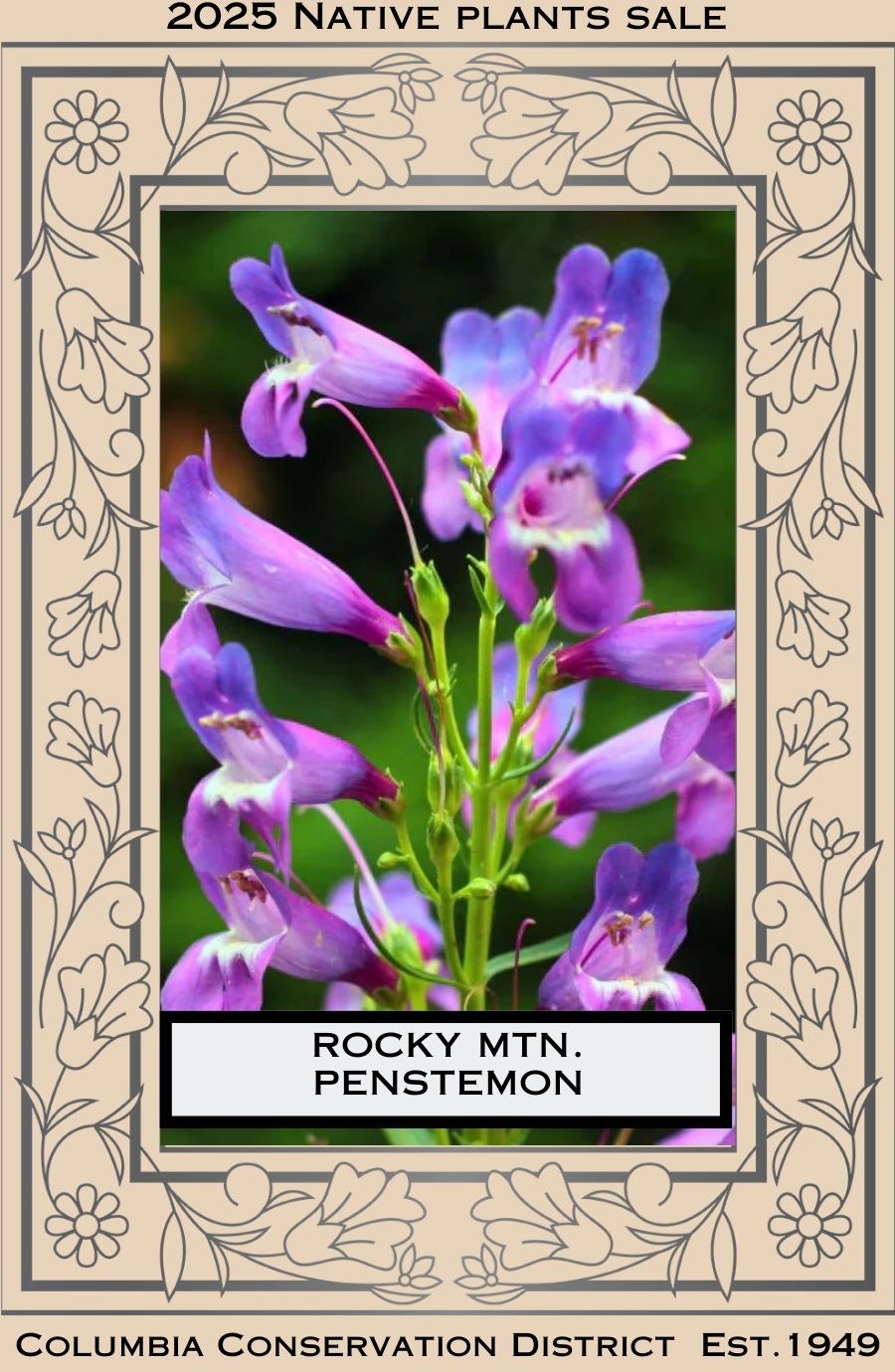
Rocky Mountain Penstemon
Penstemon Strictus
Long bluish-purple blooms in clusters from stems on a main stalk bloom mid to late spring.
Light: Full to part sun
Soil: Well-drained
Height: 1 to 3 feet
Spacing: 1 to 3 feet
Good to know: Evergreen. Attracts bees, butterflies, hummingbirds. Easy to grow!
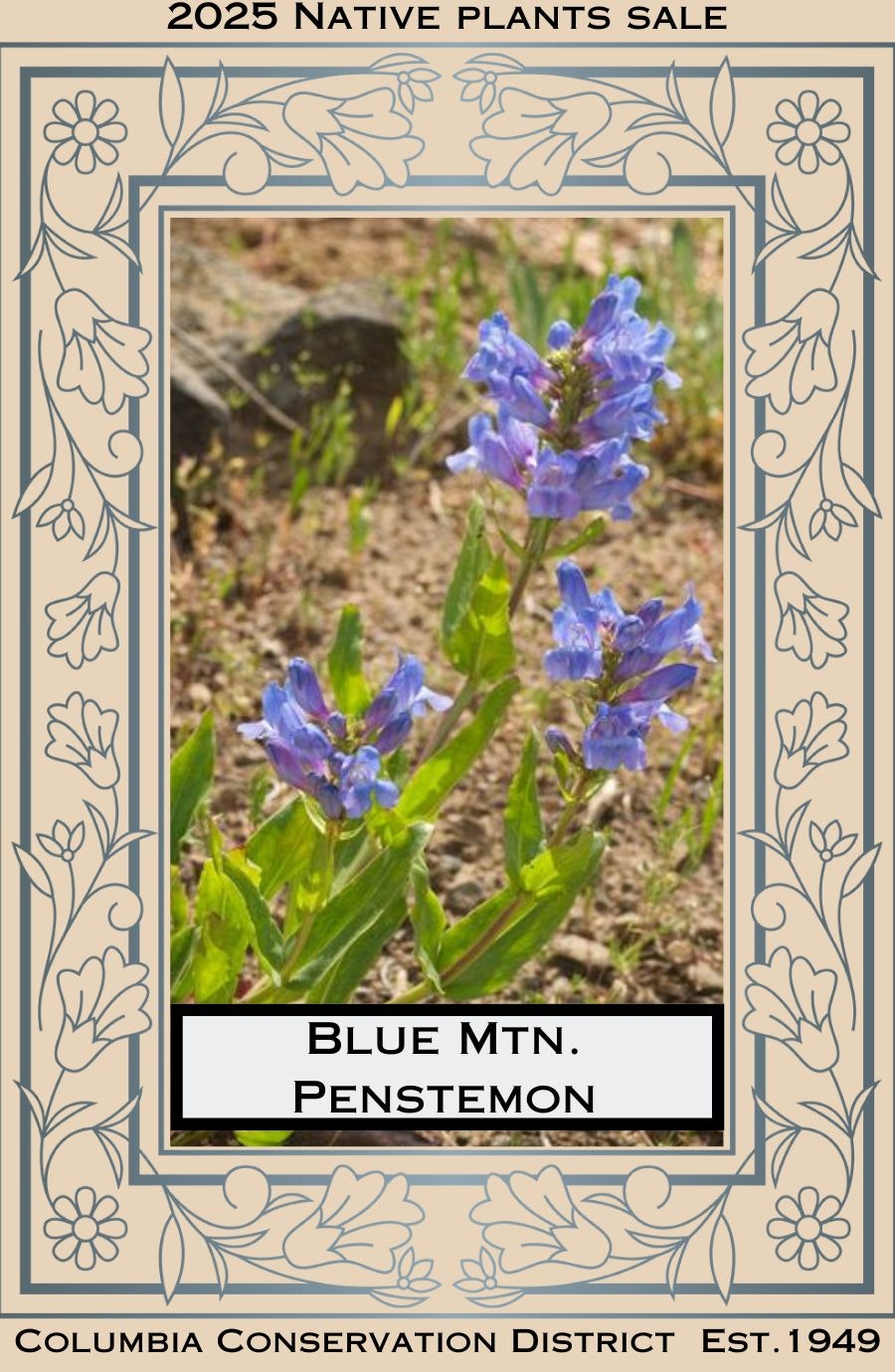
Blue Mtn. Penstemon
Penstemon pennellianus
Known for its ability to attract native bees and bumblebees.
Light: Full to part sun
Soil: Well-drained, even rocky.
Height: 10” – 18”
Spacing: 12” – 18”
Good to know: Bloom for about a month in late spring, early summer and attract pollinators. Easy to grow!
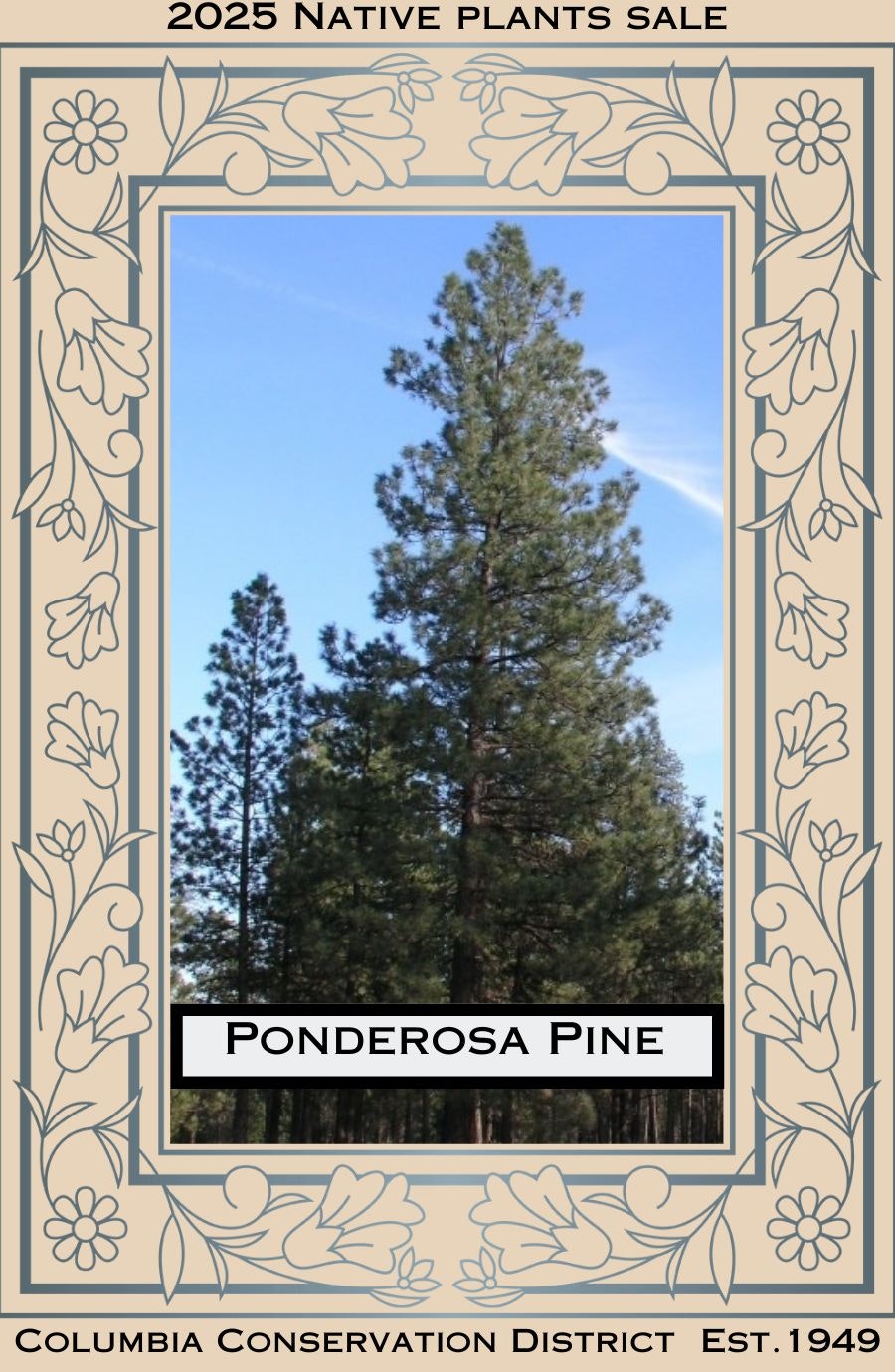
Ponderosa Pine
Pinus ponderosa
The dominant pine tree of the western U.S. and is an important timber tree. May live up to 600 years.
Light: Full sun no tolerance for shade
Soil: Well-drained moist
Height: Usually 60 to 125 feet
Spacing: 25 to 30 feet
Good to know: Produces pine cones with edible seeds, “pine nuts” which have been a historically significant forage for indigenous peoples and have become a popular gourmet item.
